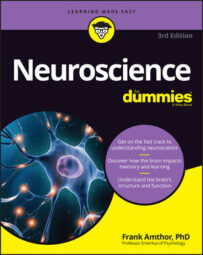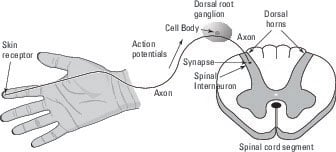These receptors are embedded in muscles, tendons, and ligaments around joints. The receptors in muscles and tendons that have relatively sustained responses called proprioreceptors signal muscle force and joint position.
Similar receptors with more short-lived, or transient, responses signal when the joint is moving, allowing us to have the movement sense of kinesthesis. For example, proprioreceptors allow you to touch your nose with your eyes closed. Transient, kinesthetic receptors allow you to reach out quickly and then stop your hand in the right place to grab a thrown ball.
Different types of senses are sometimes referred to as sensory modalities, whether on a large scale (such as vision versus touch) or within touch (for mechanical versus temperature sensation).



